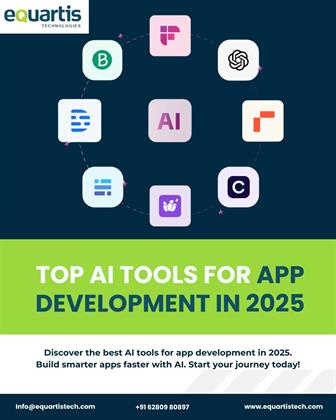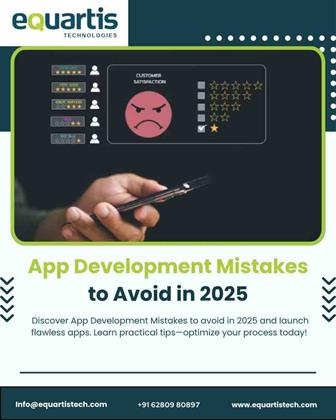
In a world where convenience is king, voice technology is changing the way we interact with mobile apps. From asking for directions to setting reminders, users are increasingly relying on voice commands to get things done—quickly and effortlessly. This shift has given rise to a powerful trend: Voice UI for Apps.
Voice User Interface (Voice UI) allows users to control apps using spoken commands, eliminating the need for taps, swipes, or typing. It’s not just a tech novelty—it’s a game-changer for accessibility, speed, and user engagement. In this blog, we’ll explore how Voice UI is transforming app experiences, the design principles behind it, and how businesses can harness its potential.
Introduction: What Is Voice UI for Apps?
Voice UI for Apps refers to the integration of voice-based interactions within mobile applications. Instead of relying solely on visual elements and touch gestures, users can speak to the app to perform tasks, ask questions, or navigate features.
Think of it as giving your app a voice—and ears. It listens, understands, and responds.
Why Voice UI Is Gaining Popularity:
Hands-Free Convenience: Ideal for multitasking or situations where touch isn’t practical.
Accessibility: Empowers users with disabilities or limited mobility.
Speed: Voice commands are often faster than manual input.
Natural Interaction: Speaking feels more intuitive than typing.
The Evolution of App UI Design
Before voice interfaces became mainstream, app UI design focused primarily on visual and tactile elements. Buttons, icons, sliders, and menus were the core tools for interaction.
Traditional UI Design Goals:
Clarity: Easy-to-understand layouts.
Consistency: Uniform design across screens.
Responsiveness: Smooth transitions and feedback.
Aesthetics: Visually appealing elements.
While these principles still matter, voice UI introduces a new layer—designing for conversation.
Designing for Voice: Principles of Voice UI
Creating a successful Voice UI for Apps requires a shift in thinking. It’s not just about visuals—it’s about dialogue.
Key Design Principles:
Conversational Flow
Design prompts and responses that feel natural, not robotic. Use everyday language.
Context Awareness
Voice UI should understand the user’s intent and context—location, previous actions, preferences.
Error Handling
Provide clear feedback when the app doesn’t understand a command. Offer suggestions or alternatives.
Multimodal Support
Combine voice with visual cues. For example, a voice command can trigger a visual confirmation.
Privacy Considerations
Let users know when the app is listening and how their data is used.
Voice UI isn’t just about speech—it’s about creating meaningful, intuitive conversations.
Mobile UI Design Meets Voice Interaction
Mobile UI design is evolving to accommodate voice features. Designers now think beyond screens and buttons, integrating voice triggers and feedback into the app’s flow.
How Mobile UI Supports Voice:
Microphones as Primary Input: Prominent mic icons encourage voice use.
Voice Feedback: Visual indicators show when the app is listening or processing.
Hybrid Interfaces: Users can switch between voice and touch seamlessly.
Apps like Google Assistant, Alexa, and Siri have set the standard for mobile voice interaction. Now, even smaller apps are adopting similar features to enhance usability.
Voice UI in Web UI Design
While mobile apps lead the way, web UI design is also embracing voice. Websites and web apps are integrating voice search, voice navigation, and voice-based form filling.
Examples of Voice in Web UI:
Voice Search Bars: Users can speak queries instead of typing.
Voice-Activated Navigation: Commands like “Go to Contact Page” or “Show Services.”
Accessibility Enhancements: Voice support for visually impaired users.
Voice UI is making the web more inclusive and efficient, especially for users on-the-go or using smart devices.
App Interface Design for Voice-Enabled Apps
App interface design must adapt to voice-first experiences. While traditional interfaces rely on visual hierarchy, voice interfaces prioritize clarity, brevity, and responsiveness.
Best Practices for Voice-Enabled Interfaces:
Minimal Visual Clutter: Keep screens clean to support voice focus.
Clear Voice Prompts: Guide users with simple, actionable phrases.
Feedback Loops: Confirm actions with both voice and visuals.
Fallback Options: Allow users to switch to touch if voice fails.
Designers must think holistically—how voice and visuals work together to create a seamless experience.
Benefits of Voice UI for Apps
Let’s break down the key advantages of integrating voice UI into mobile apps:
Benefit Description
Hands-Free Operation Ideal for driving, cooking, or multitasking
Faster Task Completion Voice commands reduce time spent navigating menus
Enhanced Accessibility Supports users with disabilities or limited dexterity
Improved Engagement Natural interaction increases user satisfaction
Competitive Edge Voice features differentiate your app in a crowded market
Voice UI isn’t just a feature—it’s a strategic advantage.
Use Cases of Voice UI in Apps
Voice UI is being adopted across industries. Here are some real-world examples:
1. Healthcare Apps
Schedule appointments via voice
Ask health-related questions
Access prescriptions hands-free
2. E-Commerce Apps
Voice search for products
Add items to cart using commands
Track orders with spoken queries
3. Travel & Navigation Apps
Get directions without typing
Book tickets via voice
Check flight status hands-free
4. Productivity Apps
Set reminders and tasks
Dictate notes and emails
Navigate calendars using voice
These use cases show how voice UI enhances convenience and functionality.
Tools & Technologies for Voice UI Development
Developers use various platforms to build voice-enabled apps:
Tool/Platform Purpose
Google Dialogflow Natural language understanding
Amazon Lex Voice bot development
Apple SiriKit Integrate with iOS voice features
Microsoft Azure Speech Real-time voice recognition
These tools help developers create responsive, intelligent voice interfaces.
Challenges in Voice UI Design
While promising, voice UI comes with its own set of challenges:
Speech Recognition Errors: Accents, background noise, and unclear commands can affect accuracy.
Privacy Concerns: Users may hesitate to speak sensitive information.
Limited Context Understanding: Voice systems may struggle with complex queries.
User Education: Not all users are familiar with voice commands.
Designers and developers must address these issues to build trust and usability.
Conclusion: The Future Is Voice-First
Voice UI for Apps is reshaping how we interact with technology. It’s not just about convenience—it’s about creating inclusive, intuitive, and efficient experiences. As voice technology continues to evolve, apps that embrace it will stand out in a competitive market.
From app interface design to web UI design, voice is becoming a core part of digital interaction. Whether you’re building a new app or upgrading an existing one, integrating voice UI can elevate your user experience and drive engagement.
Leave a Reply
You Might Like Also

Optimizing Mobile Apps for Better User Experience

Importance of UX UI Design in Mobile App Success

Effective Digital Marketing Solutions for Panchkula

Top AI Tools for App Development in 2025













